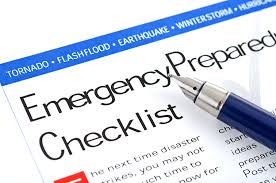 From winter storms to heavy rain and even terrorist events, your family could become home bound for days or even weeks with little or no notice. Home emergency kits are an essential part of family safety and can make the difference between an inconvenience and severe discomfort when problems arise. Your home emergency kit doesn’t have to be complex and you can add to it once you have the basic items.
From winter storms to heavy rain and even terrorist events, your family could become home bound for days or even weeks with little or no notice. Home emergency kits are an essential part of family safety and can make the difference between an inconvenience and severe discomfort when problems arise. Your home emergency kit doesn’t have to be complex and you can add to it once you have the basic items.
Home Emergency Kits: The Basic Essentials
Water: Bottled water is a must, either in individual bottles or in gallon or larger jugs. If a storm takes out your electricity, you’ll also lose access to water, even if you have a well. The CDC recommends a minimum of one gallon of water per person per day, so use this figure to calculate what you need.
Food: At least three days worth of non-perishable and easy to prepare foods for every person in your family. From granola bars to canned soups there are plenty of foods right on your grocers shelf to get you started. As you build am emergency kit or if you live in an area at high risk for hurricanes or blizzards, you can add a simple camp stove and camp or survival type foods as well.
Light and Heat: Flashlights with extra batteries, camp lanterns and chemical light sticks all make great additions to your kit. For those in cold environments, a few space blankets conduct heat well, are very inexpensive and store well.
Communication: If you have an old cell phone, include it in your kit; even without a service plan you can still dial 911. A hand crank radio and several backup phone power packs will help you stay in touch even if the power is gone.
Miscellaneous: Include the other items you’ll need to survive an emergency, from extra medication to pet supplies. Diapers, feminine hygiene products, extra glasses or contacts and other items will make things easier for you if you can’t get to a store for a few days.







